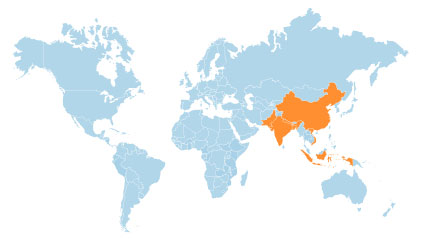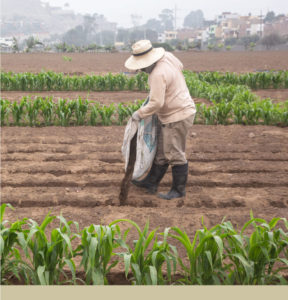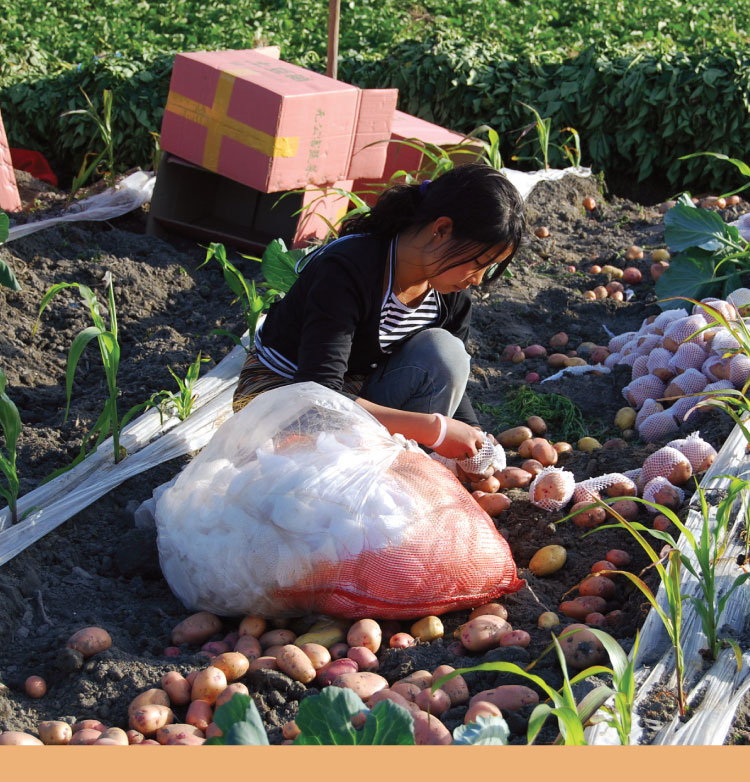INNOVATIONS
Improved potato varieties benefit millions in Asia
- Nutrition and food security
- Poverty reduction, livelihoods and jobs
- Gender equality, youth and social inclusion

Adoption or impact at scale.
Taken up by ‘next users’
CIP has substantially contributed to the development and release of improved potato varieties that are grown by millions of farmers in Asia’s top potato producing countries. CIP contributed to 34% of total releases of improved potato varieties in the region, and an adoption assessment completed in 2015 estimated that CIP-related varieties were planted to more than 1.45 million hectares (19% of the total potato area in the seven countries studied), grow by 2.93 million farming households, and benefited more than 10 million people. Key traits such as late blight and virus resistance, relatively rapid development of tubers, and tolerance of heat, drought or saline soils have made CIP-related potato varieties increasingly important for smallholder farmers, helping them overcome challenges such as limited land and climate change to produce more food and generate more income.

These varieties have boosted food security and incomes acrosse the region. In China, the world’s top potato producer, CIP-related varieties are grown on about 25% of the land dedicated to the crop. The most successful is Cooperation 88 (C88), the result of collaboration between CIP and Yunnan Normal University. A late blight-resistant variety, it has excellent qualities for both home consumption and processing, all of which contributed to widespread adoption by farmers. Estimated economic benefits from C88 between 1996 and 2015 range from USD 2.84 to a USD 3.73 billion in Yunnan province alone.
A growing selection of heat-tolerant, early maturing varieties are allowing rice or wheat farmers to add another crop into their farm systems, usually during a fallow period, which results in additional income and greater food availability. Several heat- and salt-tolerant varieties released in Bangladesh in recent years are being grown in coastal areas where a cyclone storm surge left farmland too saline for most crops. Biofortified high iron/zinc potatoes, which are currently being evaluated in several Asian countries and could be released as new varieties in the near future, have the potential to make an important contribution to reducing malnutrition. CIP’s potato breeding efforts will thus contribute to food and nutrition security and incomes in Asia for years to come.
The CGIAR Research Program on Roots, Tubers and Bananas (RTB), SPIA.
International Rice Research Institute, Yunnan Normal University, Bangladesh Agricultural Research Institute (BARI), Nepalese National Potato Research Program






